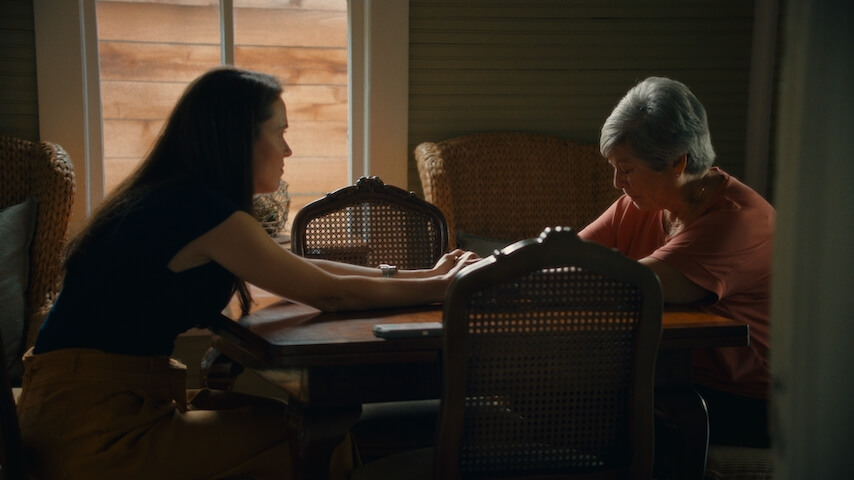The Yogurt Shop Murders takes a sensitive look at an unthinkable act
HBO's four-part true-crime docuseries centers on a tragedy in Austin.
Sonora Thomas, Barbara Ayres-Wilson (Photo: HBO)
This is probably anecdotal, but it feels like our collective TV diet is due for a good, HBO-grade true-crime docuseries right about now. Which, as eloquently intimated by an interviewee in The Yogurt Shop Murders (a new four-parter from that aforementioned network and A24 that very much fits that bill), is a pretty gross and callous thought to even have. “These murders…continue to devastate, puzzle, and fascinate many,” Sonora Thomas, the sister of one of the victims chronicled in the doc, reads from her own writings for the camera. “As a surviving sibling, I have alternated between disgust for the ongoing fascination and awe that the public continues to be horrified by an event that has shaped every aspect of my life.”
There is a guilt that comes—or at least should come—with wanting to watch these sorts of tragedies unfold and be picked apart over several hours, with casually clicking to the next episode from a couch as if the unthinkable stories that ruined the lives of real people are some sort of entertainment. That the segment above ends with news footage of a young Sonora in 1991, just after the murders, “hyperventilating while my grief-stricken mother talks to the reporter,” as she puts it years later, underlines this idea and, perhaps, even hints at some of the guilt director Margaret Brown (2022’s Descendant) herself had with this project, not to mention the thorny issues that come with documenting such horrors in general.
On a December evening in 1991, four teenage girls—Amy Ayers (13), Eliza Thomas, Jennifer Harbison (both 17), and the latter’s sister Sarah (15)—were bound by their underwear and shot in the backs of their heads at strip-mall frozen-yogurt shop where two of them worked before the spot was set aflame. The case shocked the community and became a national story, with Thomas noting, “These murderers were said to have shattered the innocence of the small city of Austin,” a sentiment echoed almost verbatim by the actual mayor of that city in a news conference when suspects were apprehended nearly a decade after the killings occurred. (Highlighting that small-town-ness, the opening credits are set to a cover of “Devil Town,” which was also used to great, albeit very different, effect in the Austin-shot show Friday Night Lights.) 48 Hours on CBS did (at least) four episodes on the case and its many twists and turns. And from the get-go of this new docuseries, you get the sense that the relatives of the deceased have had to relive that one night over and over and in front of countless cameras.
